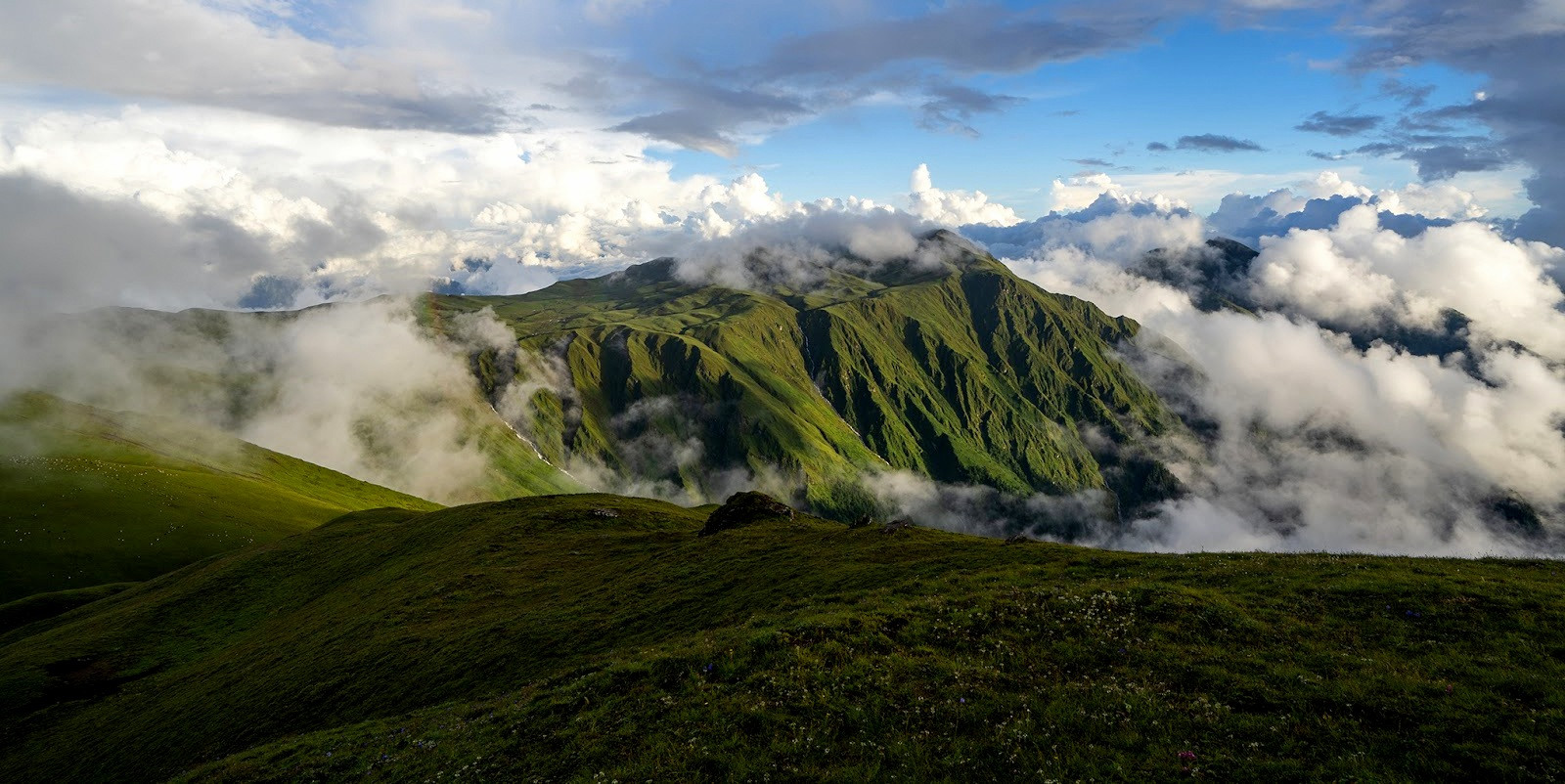Verdant Landscapes
During Nepal's monsoon season, the landscapes undergo a dramatic transformation, becoming incredibly lush and vibrant. This period of rejuvenation covers the valleys, hills, and mountains in rich greenery, creating breathtaking scenes that are a photographer's dream.
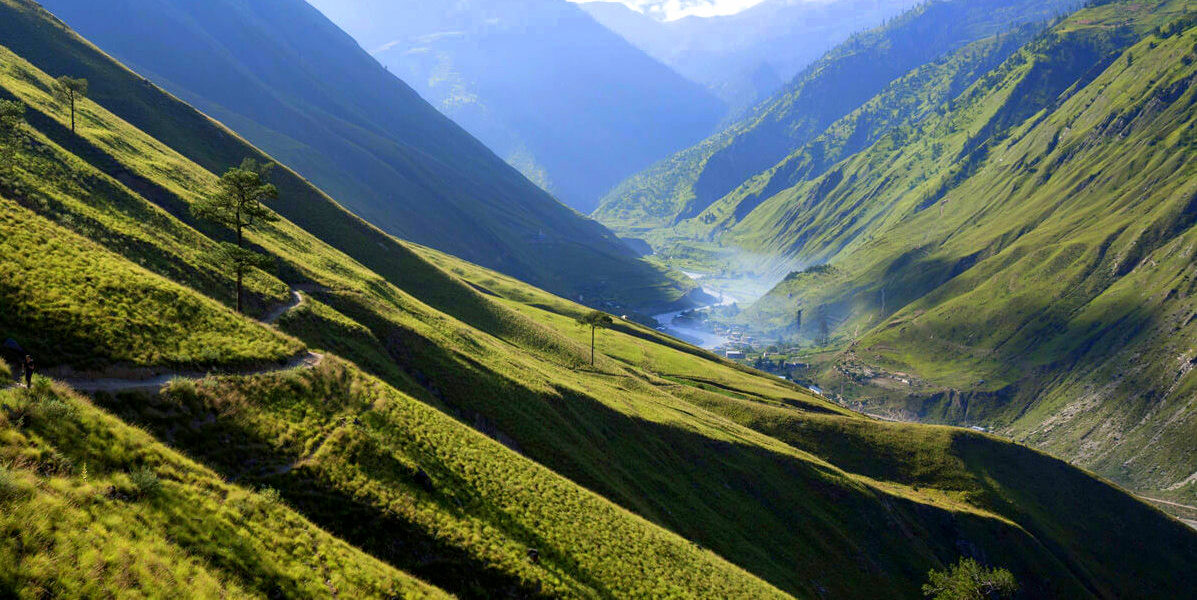
-
The Magic of Monsoon Greenery: As the monsoon rains sweep across the country, they bring life to the flora. Fields, forests, and even arid regions soak up the rain, sprouting a fresh coat of vibrant green. This makes even the simplest treks or walks through the countryside a visually stunning experience.
-
Enhanced Natural Beauty: The monsoon moisture not only enhances the greenery but also intensifies the natural beauty of waterfalls, rivers, and lakes. Water bodies swell and cascade with renewed vigor, adding dynamism to the already picturesque landscapes. For instance, waterfalls like the Davis Falls in Pokhara become more spectacular, drawing visitors to witness their majestic flow.
-
Ideal for Nature Lovers: For nature enthusiasts and botanists, the monsoon season is particularly rewarding. The increased humidity and rainfall lead to a flourish in biodiversity. Wildflowers bloom in abundance, and rare plants that remain dormant through the dry seasons awaken, dotting the landscape with a variety of colors and textures.
-
Photographic Opportunities: The unique lighting conditions brought about by monsoon clouds create dramatic and compelling lighting, ideal for photography. The overcast skies diffuse the sunlight, allowing for soft, even lighting that helps in capturing the lush landscapes without the harsh shadows that brighter days might produce.
-
A Refreshed Environment: Post-rain clarity in the air also means sharper, clearer views of distant mountains and landscapes. On days when the rain clears up, views can be particularly crisp, with enhanced visibility that allows for spectacular panoramic shots.
Exploring Nepal during the monsoon not only offers a retreat from the more crowded trekking seasons but also presents a unique perspective of the country’s natural beauty. The verdant landscapes, enhanced by the monsoon rains, offer a tranquil and enriching experience, making it a worthwhile time for those seeking solitude and a deep connection with nature.
Peaceful Trekking
Trekking in Nepal during the monsoon season offers a unique and tranquil experience that is markedly different from the more popular trekking months. The monsoon, typically occurring from June to August, deters many travelers due to the rain, but this can be a blessing for those seeking solitude and a quieter journey through Nepal’s stunning landscapes.
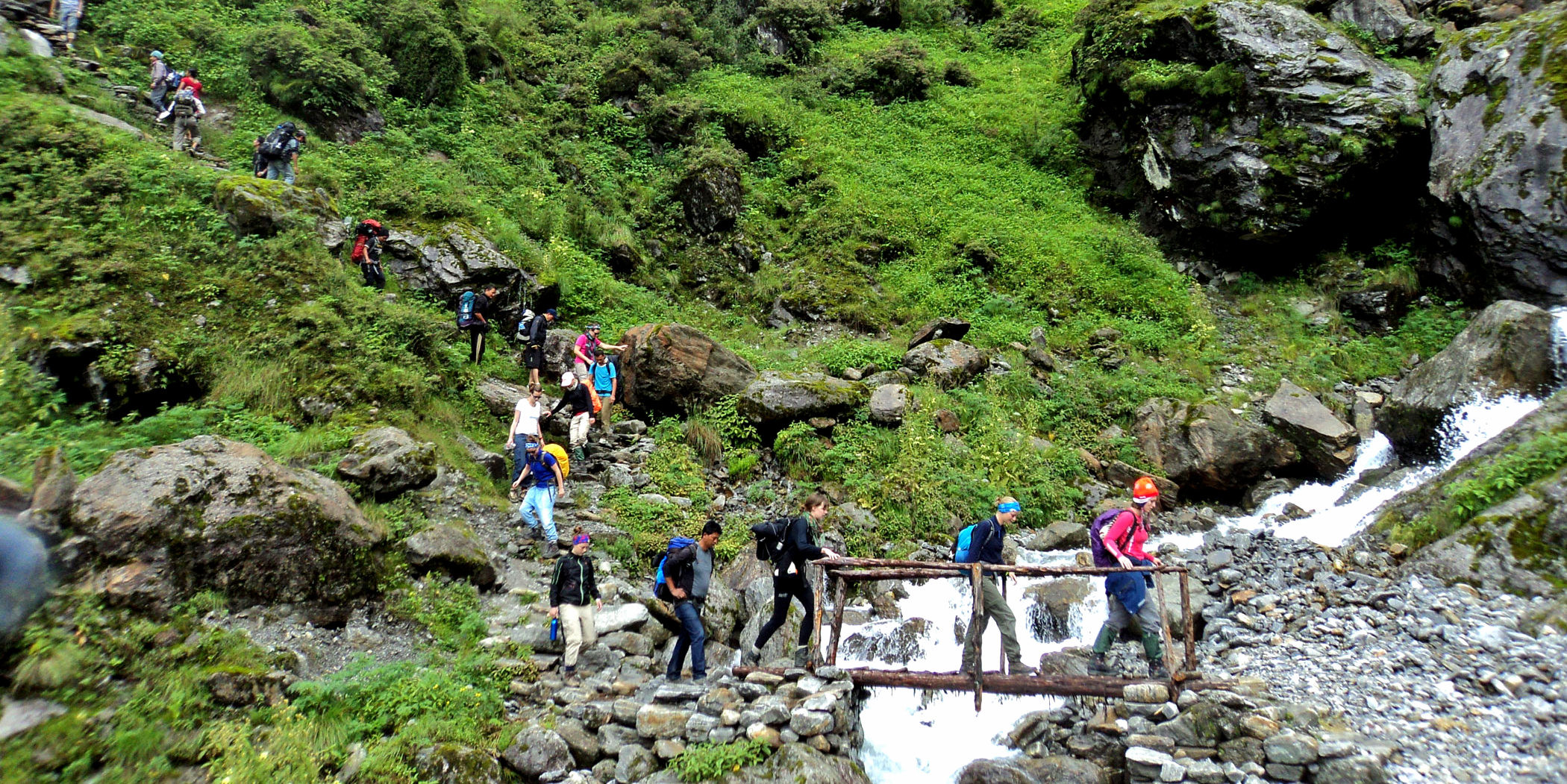
-
Fewer Crowds: One of the main advantages of trekking during the monsoon is the significant reduction in crowd size. Popular trails like the Annapurna Circuit and the Everest Base Camp trek see fewer trekkers, allowing for a more serene and personal experience. This quiet atmosphere can make the journey feel more introspective and connected to nature.
-
Lush Environment: The rains of the monsoon bring life to the flora along the trails, with the forests and hillsides flourishing in vibrant greens. This growth results in some of the most picturesque scenery of the year, with wildflowers blooming and rivers brimming. Trekking through such dynamic landscapes can be incredibly rewarding and offers a different perspective than the drier seasons.
-
Cool Climate: The monsoon also brings cooler weather, which can be more comfortable for trekking compared to the heat of the dry season. The cloud cover and periodic rains keep the temperatures moderate, making physical activity less strenuous and more enjoyable, although it’s important to be prepared for slippery paths and leeches.
-
Enhanced Sense of Adventure: Trekking during the monsoon adds an element of adventure to the journey. Navigating wet trails and experiencing the raw power of nature as it comes alive with the rains can be thrilling. It’s an ideal time for those who appreciate nature’s unpredictability and the challenges that come with it.
-
Opportunities for Wildlife Sightings: The increased water availability and lush vegetation also attract more wildlife. This is an excellent time for bird watchers and nature enthusiasts to spot local fauna, which may be more visible during these months.
Special Precautions
-
Waterproof Gear: Ensure you have a good quality waterproof jacket, trekking boots, and backpack covers.
-
Trail Selection: Choose trails that are known to be safer and less prone to landslides during the monsoon, such as the lower elevations of the Annapurna region.
-
Local Guides: Employing a local guide can enhance safety, as they are knowledgeable about the terrain and weather conditions.
Trekking in Nepal during the monsoon offers a peaceful, lush, and distinct trekking experience that can be as rewarding as it is beautiful. It’s perfect for those looking to avoid the crowds and experience the raw, verdant beauty of Nepal in solitude.
Thriving Wildlife
During Nepal's monsoon season, the natural world comes alive, offering wildlife enthusiasts a unique opportunity to observe animals in their most active and vibrant state. The abundant rainfall during this time revitalizes the ecosystem, resulting in an explosion of biodiversity that transforms Nepal’s national parks and wildlife reserves into thriving habitats.
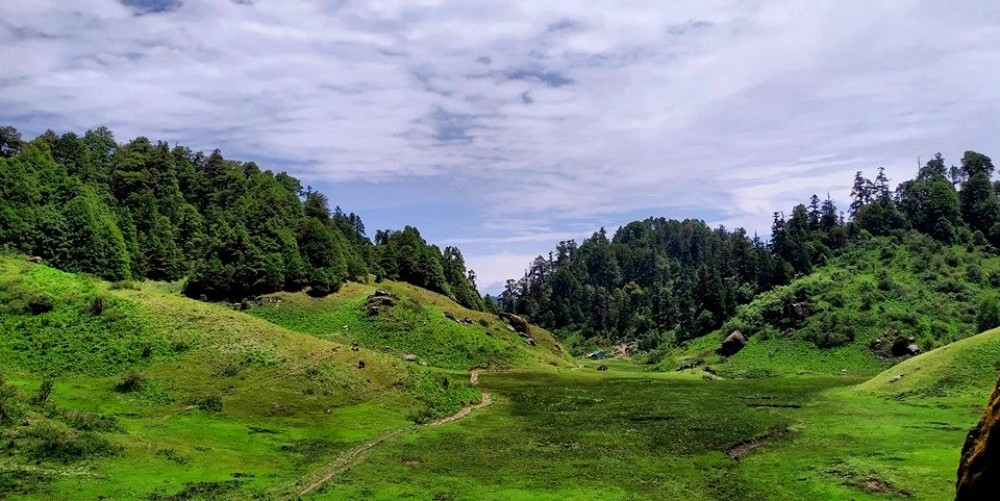
-
Rich Ecosystems: The lush vegetation accompanying the monsoon provides ample food resources for a variety of wildlife. This abundance allows animal populations to flourish, making it an excellent time for wildlife observation. The dense greenery not only supports herbivores with fresh foliage but also offers cover for predators, creating dynamic wildlife interactions that are fascinating to witness.
-
Active Wildlife: With the cooler weather and increased water sources, animals are generally more active during the monsoon. Species that might remain hidden during the harsher, drier months are more likely to be seen. For example, elephants, rhinos, and various deer species can be frequently spotted in areas like Chitwan National Park and Bardia National Park. These conditions also lead to increased bird activity, making the monsoon a prime time for bird watching.
-
Bird Migration: The monsoon season coincides with the arrival of migratory birds, enhancing the already rich avian diversity of Nepal. Birdwatchers can catch glimpses of rare and exotic birds that visit the region only during this fertile period. The wetlands and forests are filled with the calls and colors of numerous bird species, adding to the allure for ornithologists and casual bird enthusiasts alike.
-
Unique Wildlife Experiences: The vibrant ecosystems during the monsoon offer more than just visual delights; they provide a chance to engage with nature on a deeper level. Guided wildlife tours during this season are particularly rewarding as the naturalists can show visitors aspects of the jungle life that are less apparent during other times of the year.
-
Conservation Insight: Many conservation programs and research activities take place during the monsoon, as this is when the flora and fauna are most dynamic. Participating in or observing these activities can provide insightful experiences about wildlife conservation efforts in Nepal.
Tips for Wildlife Watching in the Monsoon
-
Appropriate Gear: Equip yourself with waterproof clothing and gear to stay comfortable during your wildlife excursions.
-
Insect Protection: The monsoon brings out numerous insects, so insect repellent is a must.
-
Guided Tours: Opt for guided tours with experienced naturalists who know the best spots and times for wildlife sightings.
-
Patience and Vigilance: The dense vegetation can sometimes make spotting wildlife challenging, so patience and a keen eye are essential.
The monsoon season in Nepal transforms the landscape into a vibrant sanctuary for wildlife. For those willing to navigate the rains, this season offers a unique and rich opportunity to witness the natural world in its most flourishing state.
Vibrant Cultural Festivals
Nepal’s monsoon season not only rejuvenates its landscapes but also marks a period of vibrant cultural festivities that are deeply embedded in the local traditions and social fabric. The monsoon festivals offer travelers a unique glimpse into the cultural heart of Nepal, providing opportunities to participate in and observe rituals that are both colorful and significant.
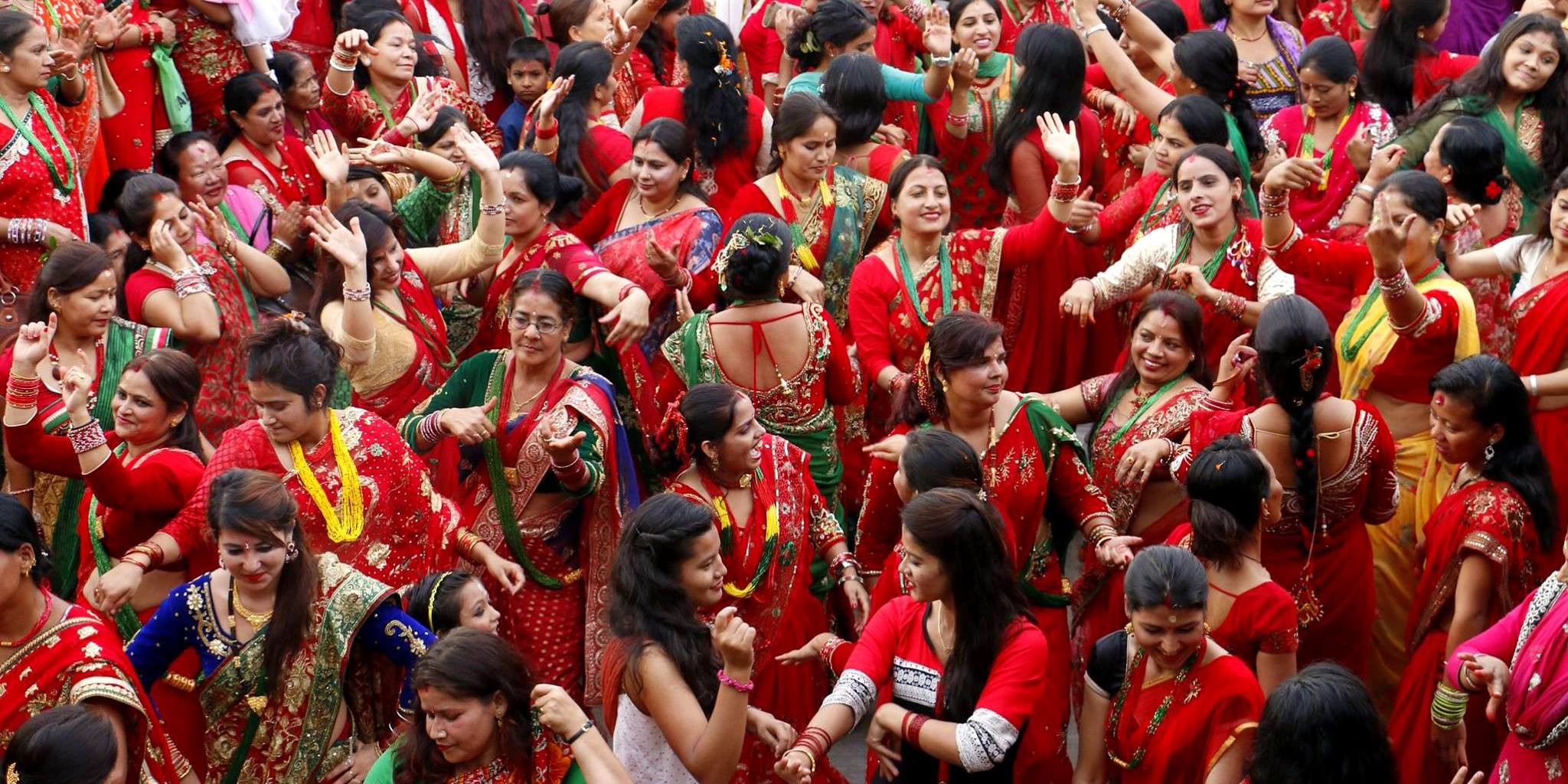
-
Ropain Festival: The Rice Planting Day: One of the most lively and engaging festivals during the monsoon is the Ropain Festival, also known as Asar Pandra. This festival celebrates the annual rice planting season and is a time when farmers and communities come together in the fields to plant rice, sing traditional songs, and dance in the mud. It's a joyous occasion that symbolizes fertility and the importance of agriculture in Nepali culture. Visitors are often invited to join in, providing a hands-on experience of Nepali rural life and traditional farming practices.
-
Saune Sankranti and Janai Purnima: Saune Sankranti marks the beginning of the month of Shrawan in the Hindu calendar, leading up to another significant festival, Janai Purnima. On Janai Purnima, Hindu men renew their Janai (a sacred thread worn across the chest), and everyone partakes in a special soup made of beans and rice called Kwati, which is believed to strengthen the body against the monsoon's chill. This festival is also characterized by colorful wristbands that brothers and sisters exchange, symbolizing protection and the bond between them.
-
Gai Jatra: The Festival of Cows: Gai Jatra, or the 'festival of cows', is another significant event that falls during the monsoon. It is celebrated in Kathmandu valley by the Newar community to commemorate the deceased from the past year. Families who have lost a loved one participate in a procession, leading a cow or a young boy dressed as a cow. The festival includes much humor and satire, with street performances, jokes, and costumes that are intended to help ease the pain of loss.
-
Indra Jatra: Welcoming the Rain God: Towards the end of the monsoon, Indra Jatra is celebrated, particularly in Kathmandu. This festival honors Indra, the Hindu god of rain and king of heaven. The festival features the Kumari (the living goddess) procession, traditional dances, and dramatic reenactments from Hindu mythology. The streets of Kathmandu become a stage for various performances, and the air is filled with devotion and festivity.
Tips for Enjoying Monsoon Festivals in Nepal
-
Dress Appropriately: Opt for comfortable and modest clothing suitable for the weather and respectful of the local culture.
-
Health Precautions: Carry sanitizers and be mindful of water and food hygiene to avoid monsoon-related illnesses.
-
Cultural Sensitivity: Be respectful of local customs and religious practices. Always ask for permission before taking photos during sensitive moments or rituals.
-
Local Interaction: Engage with local guides or hosts who can provide deeper insights into the meanings and traditions of the festivals you attend.
Experiencing these vibrant cultural festivals during the monsoon season offers travelers a profound understanding of Nepal’s rich cultural heritage and the joyous spirit of its people, making it a uniquely rewarding time to visit.
Cost-Effective Travel
Traveling to Nepal during the monsoon season can be significantly more cost-effective compared to peak tourist periods. The months from June to August offer budget-conscious travelers numerous advantages that help stretch their travel dollars further while still enjoying a full experience of what Nepal has to offer.
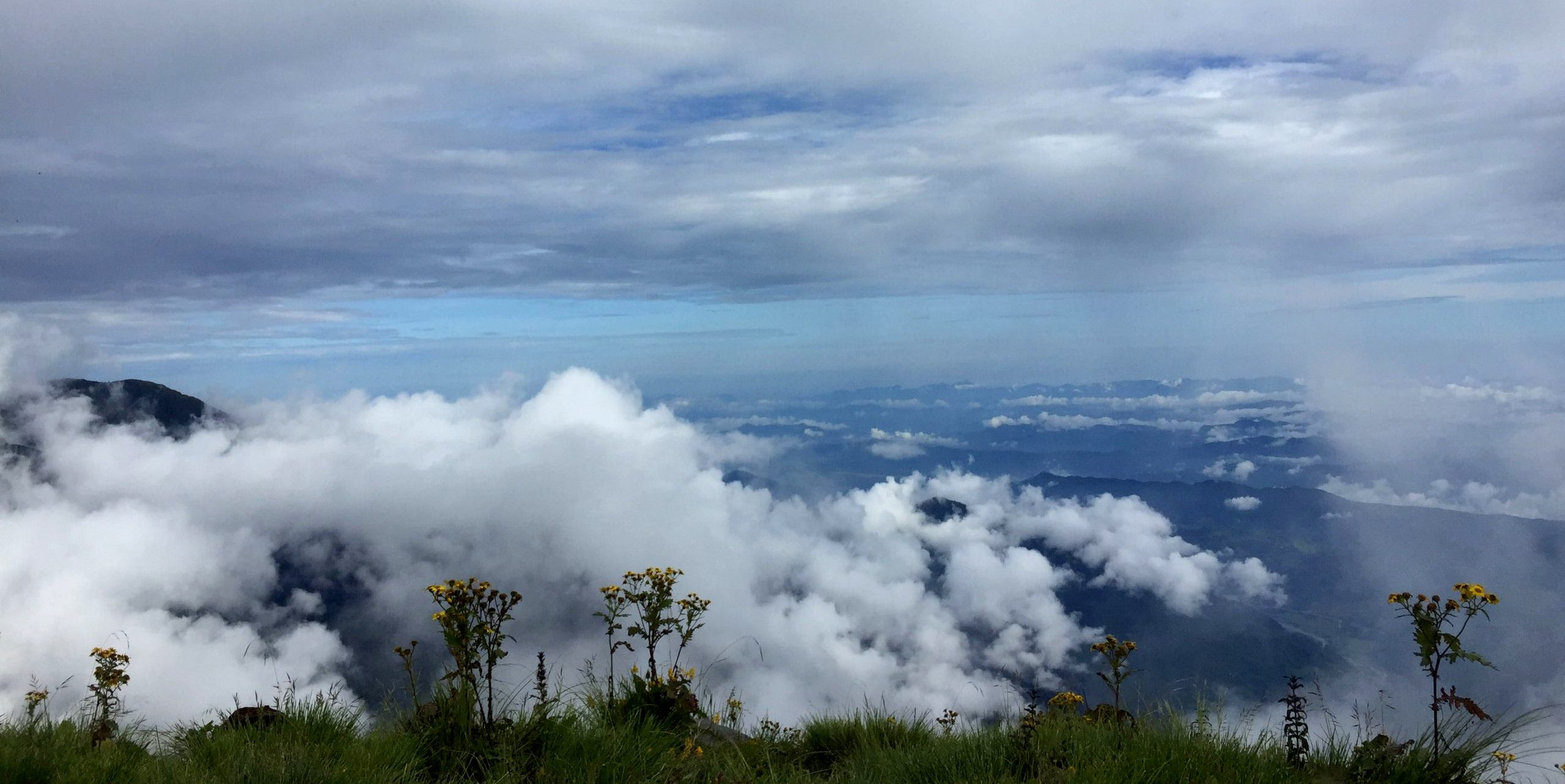
-
Lower Travel Costs: During the monsoon, the demand for flights and accommodation drops, which typically leads to lower prices. Airlines and hotels often offer discounts to attract tourists in this off-peak season. This can mean substantial savings on airfare and lodging, allowing you to allocate funds to other experiences like guided tours, dining, or even upgrading your stay.
-
Discounted Accommodation: Hotels and guesthouses in tourist areas like Kathmandu, Pokhara, and Chitwan offer significant discounts during the monsoon. These discounts can sometimes reach up to 30-50% off regular rates. Additionally, with fewer tourists, you have a better chance of securing accommodations that might be too expensive or fully booked during peak times.
-
Affordable Trekking and Tours: Local tour operators and trekking agencies are more likely to negotiate prices during the monsoon. This includes guided treks, city tours, and adventure activities like rafting and paragliding. Not only do you get the advantage of lower prices, but you also enjoy a less crowded experience with more personalized service.
-
Seasonal Promotions: Many businesses in the travel and tourism sector run special promotions exclusively during the off-season. These can include package deals that bundle food, lodging, and activities at a reduced rate, making it an ideal time for value-seeking travelers.
-
Economic Dining and Shopping: Restaurants and shops may also have lower prices to encourage spending during the slower months. This is a great time to indulge in local cuisine or pick up souvenirs and handicrafts at lower prices, as vendors are more willing to bargain.
Strategic Planning for Extra Savings
-
Book in Advance: While spontaneous bookings can be cheaper during the monsoon, planning often secures even better deals, especially for flights and popular hotels.
-
Check Local Listings: Local websites and forums can offer deals that are not available on international platforms.
-
Travel Insurance: Since the monsoon season can bring unpredictable weather, investing in travel insurance can save money in case of cancellations or emergencies.
Traveling during the monsoon not only offers a unique view of Nepal’s lush beauty and vibrant festivals but also represents an opportunity for cost-effective travel, making it an appealing option for a wide range of tourists, from backpackers to luxury travelers.
Unique Adventures
Traveling to Nepal during the monsoon season offers a unique set of adventures that can’t be experienced at any other time of year. This period is characterized by abundant rainfall that breathes life into the landscape, providing a backdrop for activities that are both exhilarating and distinctively tied to the wetter conditions.
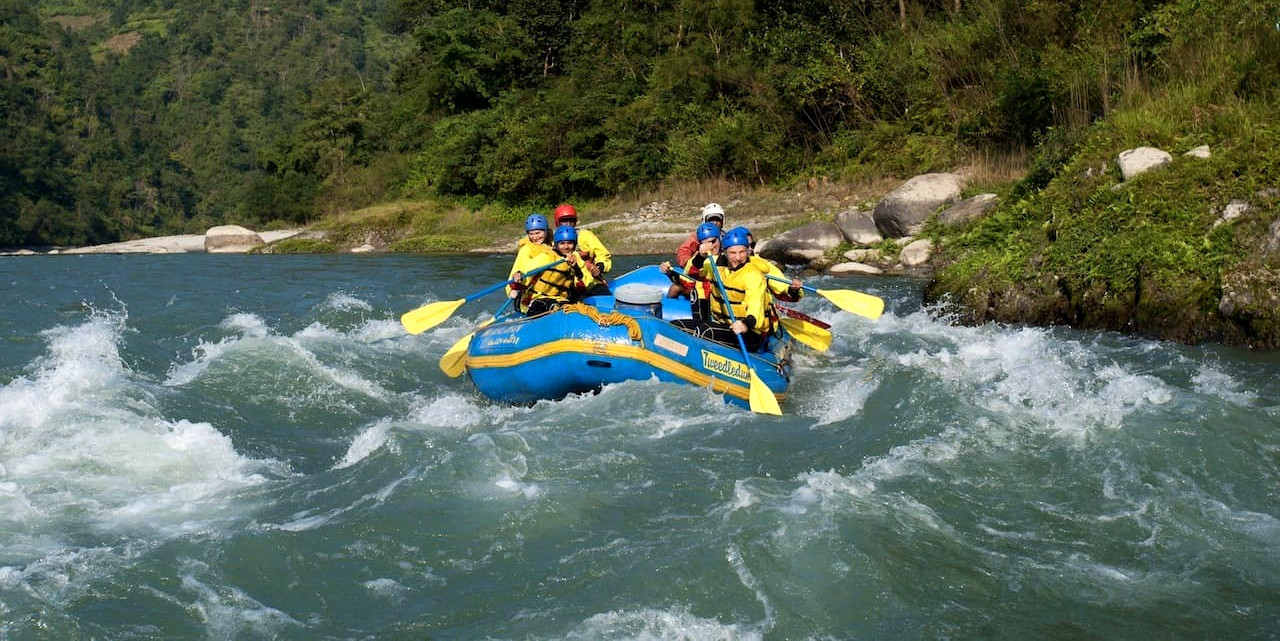
-
White-Water Rafting: The monsoon rains swell Nepal’s rivers, making them ideal for white-water rafting. This is the best time for adrenaline seekers to experience the full power and challenge of rafting in Nepal. Rivers like the Trishuli, Bhote Koshi, and the Sun Koshi become rapid-heavy and provide thrilling rides with higher and faster waters. Rafting during the monsoon not only tests the skills of experienced rafters but also offers beginners a memorable introduction to the sport under the guidance of expert instructors.
-
Trekking in Lush Settings: While some high-altitude treks may be less accessible due to the rains, lower altitude treks can be exceptionally rewarding during the monsoon. The rain transforms these trails into vibrant pathways bursting with lush vegetation, blooming flowers, and active wildlife. Trekking in these conditions is a unique challenge and offers a different kind of beauty and solitude not found during the busier trekking seasons.
-
Jungle Safaris: The monsoon season enhances the lushness of Nepal’s jungles, making them denser and richer in flora and fauna. Wildlife viewing can be particularly rewarding as the cooler weather encourages animals to be more active during the day. Parks like Chitwan and Bardia offer jeep and even canoe safaris, where visitors can see a variety of wildlife such as rhinos, deer, and numerous bird species.
-
Exploring Caves: Nepal is home to some fascinating caves, such as the Siddha Gufa, the largest cave in the country, located near Bandipur. Exploring these caves during the monsoon offers a respite from the rain and an adventure into the cool, mysterious underground world of stalactites and stalagmites, made all the more dramatic with the natural sounds of dripping water enhanced by the season.
-
Participating in Cultural Festivals: The monsoon also coincides with a variety of vibrant cultural festivals. Participating in these events, such as the Ropain Rice Planting Festival, allows travelers to engage directly with the local culture in a way that is both festive and educational. It’s a chance to learn about agricultural practices, local folklore, and community life in Nepal.
-
Photography Expeditions: The dramatic landscapes and unique lighting of the monsoon season provide perfect conditions for photography enthusiasts. The overcast skies diffuse the sunlight, reducing shadows and enhancing the vibrancy of colors in the lush landscapes and during cultural celebrations.
Tips for Monsoon Adventures
-
Prepare Appropriately: Equip yourself with waterproof gear and quick-dry clothing to stay comfortable.
-
Stay Informed: Keep up to date with local weather forecasts to plan your activities safely.
-
Embrace the Unexpected: The unpredictable weather can lead to spontaneous adventures and unexpected sights, adding to the unique charm of traveling during the monsoon.
Monsoon travel in Nepal is for those looking for something different — a journey filled with adventure, cultural immersion, and the raw beauty of nature in its most vibrant state.
Indoor Cultural Exploration
Exploring Nepal during the monsoon doesn't mean you have to be outdoors all the time. The rainy season also provides a perfect opportunity to delve into the country's rich indoor cultural offerings. Museums, art galleries, traditional craft workshops, and cultural performances are abundant, and visiting these sites can provide a deeper understanding of Nepal's heritage and contemporary artistic expressions.

-
Museums: Nepal is home to several museums that showcase its history, culture, and art. The National Museum of Nepal in Kathmandu, for example, offers extensive exhibits ranging from historical artifacts to sculptures and paintings that trace the country's rich past. Similarly, the Patan Museum in Lalitpur displays collections of traditional Nepali art, mostly focusing on Buddhist and Hindu iconography, which are not only educational but also visually stunning.
-
Art Galleries: Kathmandu and other major cities host numerous art galleries that feature the works of local and international artists. The Siddhartha Art Gallery in Kathmandu, for instance, provides insights into the contemporary art scene with exhibitions that often reflect Nepal’s social and political landscapes. Visiting these galleries can give you a glimpse into the vibrant and evolving creative culture of Nepal.
-
Cultural Centers: Cultural centers often offer programs and workshops that allow visitors to engage directly with Nepali cultural practices. The Rato Bangala Kitab in Patan, for instance, regularly organizes events, music performances, and readings that showcase Nepali literature and arts. The Kathmandu Valley Preservation Trust also offers talks and seminars on the architectural heritage of the valley, which can be a fascinating indoor activity during the rainy days.
-
Traditional Craft Workshops: Participating in workshops for traditional Nepali crafts like pottery making, Thangka painting, or fabric weaving offers a hands-on way to understand and appreciate the local artistry. These workshops not only keep you dry but also provide a tangible connection to Nepali traditions and the skills passed down through generations.
-
Theatrical and Musical Performances: Nepal has a lively theater scene, with regular performances that often incorporate traditional music, dance, and drama. Venues like the Mandala Theatre in Kathmandu stage plays that reflect Nepali stories and societal issues. Watching a live performance is an excellent way to experience the dynamic cultural life of Nepal while staying indoors.
-
Cooking Classes: For a truly immersive experience, consider taking a Nepali cooking class. These classes are a great way to learn about the local cuisine and culinary techniques. Dishes like momo (dumplings), dal bhat (lentil soup and rice), and sel roti (traditional rice doughnut) are not only delicious but also provide insight into the daily lives and tastes of the Nepali people.
Tips for Indoor Cultural Exploration
-
Check Opening Times: Monsoon season might affect opening hours, so it’s best to check in advance.
-
Reserve in Advance: For activities like workshops or cooking classes, it’s advisable to book ahead.
-
Dress Appropriately: While these are indoor activities, dressing conservatively is respectful in cultural spaces.
Indoor cultural exploration offers a rich complement to the outdoor adventures of Nepal, allowing travelers to deeply engage with the country's heritage and artistic expressions, making every moment of their visit enriching, regardless of the weather.
Visiting Nepal during the monsoon season unveils a unique panorama of opportunities, from lush landscapes and vibrant wildlife to colorful festivals and thrilling adventures. This time offers not only the beauty of nature in full bloom but also the chance for quieter, more cost-effective travel. The monsoon brings fewer crowds, lower costs, and a chance to engage deeply with local culture and nature. At Relax Getaways, we encourage you to explore the monsoon magic of Nepal—a time when every raindrop tells a story and every view holds a new adventure. Embrace the season's unpredictability and discover a wealth of experiences that promise both enchantment and excitement. Join us to see why the monsoon in Nepal is a perfect time for travelers seeking beauty and adventure off the beaten path.
FAQs for Nepal’s Monsoon Magic: Why You Should Visit During the Off-Season
Q: What can I expect from the weather during the monsoon in Nepal?
A: During the monsoon season, which typically runs from June to August, expect frequent and heavy rainfall, especially during the afternoon and night. The temperatures are generally warm, but the rain can bring cooler conditions.
Q: Are there any advantages to visiting Nepal during the monsoon season?
A: Yes, there are several advantages, including lush green landscapes, fewer tourists, lower prices on accommodation and travel, and the opportunity to witness vibrant cultural festivals that are unique to this time of year.
Q: Is trekking possible during the monsoon season?
A: While high-altitude treks might be challenging due to rain and visibility issues, lower altitude treks can be quite pleasant. Trails are less crowded, and the scenery is at its most lush and vibrant. Trekking in regions like the Annapurna foothills is popular during the monsoon.
Q: What should I pack for a monsoon trip to Nepal?
A: Essential items include waterproof jackets and pants, sturdy, waterproof trekking boots, a waterproof cover for your backpack, and quick-drying clothes. Don’t forget to bring insect repellent and anti-leech socks if you're going into rural or forested areas.
Q: How can I stay healthy during the monsoon season in Nepal?
A: To stay healthy, drink only bottled or purified water, avoid raw foods, and use mosquito repellent to protect against insect-borne diseases. Be prepared for leeches on hiking trails by wearing appropriate clothing and carrying salt or leech repellent.
Q: What are some recommended activities during the monsoon in Nepal?
A: Aside from trekking, you can enjoy white-water rafting, which is at its best during the monsoon due to higher river levels. Cultural festivals like the Ropain (Rice Planting Festival) offer unique local experiences. Indoor activities such as visiting museums, art galleries, and participating in cooking classes are also great options.
Q: Are travel and accommodation easy to book during the monsoon?
A: Yes, with fewer tourists during the monsoon, both travel and accommodation are easier to book and often available at reduced rates. It’s a good idea to confirm bookings and check for any monsoon discounts or specials.
Q: What wildlife can I see during the monsoon in Nepal?
A: The monsoon season is a fantastic time for wildlife enthusiasts. Animals are more active due to the cooler temperatures, and the lush landscapes provide excellent opportunities to spot species like rhinoceros, elephants, and a variety of birds in national parks such as Chitwan and Bardia.
Q: Is it safe to travel in Nepal during the monsoon?
A: Yes, it is generally safe to travel in Nepal during the monsoon, but it is important to take precautions against weather-related challenges. Always check local weather forecasts, be prepared for sudden changes, and consider hiring local guides for trekking and outdoor activities.
Q: How do I deal with leeches while trekking?
A: Leeches are common on monsoon treks. Wear long trousers tucked into your socks or boots, use leech socks, and carry salt or tobacco to deter them. Checking frequently and removing any leeches promptly can help manage these pests.
For the Nepal tour, please click here.
If you are looking for different kinds of Nepal Tours or Trekking Packages, feel free to contact us.
